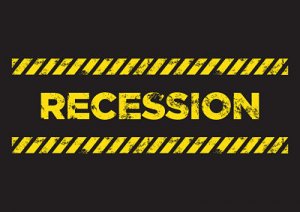Does it even matter?
June 10, 2020
 Two months ago, we couldn’t imagine anything worse than the coronavirus pandemic. But at least we were in it #together. And now, in the past week, we’ve seen just how not together we all are as we watch our country unravel in cities far away and right here in Des Moines. As I write this, people are afraid to leave their homes, not because of the virus but because of their neighbors.
Two months ago, we couldn’t imagine anything worse than the coronavirus pandemic. But at least we were in it #together. And now, in the past week, we’ve seen just how not together we all are as we watch our country unravel in cities far away and right here in Des Moines. As I write this, people are afraid to leave their homes, not because of the virus but because of their neighbors.
There have been moments in my life when I have questioned my professional calling. Surely I could do something nobler than marketing. I can’t do blood, so being a doctor or nurse was never in the cards. But I could have been a lawyer or a policeman or run a non-profit.
Would the world have made better use of my talents in one of those professions?
I suspect some of you may be finding it challenging to even think about business or marketing right now.
You may be wondering if it even matters. Is anyone listening, or is the world’s noise so insistent that they can’t even contemplate anything beyond their own survival?
I believe what we do does matter, and I believe we have a unique role in helping the world be a better place for all human beings.
It’s probably always been true, but in the last decade, the marketplace has made it very clear. People want to do business with companies that stand for something. Who defend something. Who fight for something. Who believe in something and, most of all, who are willing to take action to change the world in alignment with those beliefs.
That’s not to say you can’t or shouldn’t sell your products or services. In fact, the research is clear. When you declare your corporate position on whatever issues you choose to tackle or help resolve, your consumers want to buy even more of what you sell. That’s their version of high fiving you.
Whether you are a solopreneur or the CEO of one of the largest companies in the US, the opportunity is the same. We can build a community made up of our employees, our customers, and our prospects, and we can share those beliefs. We can talk about what we are doing to accomplish social change, and we can invite our community to be a part of our efforts.
I’m not suggesting that every business should jump onto the #blacklivesmatter bandwagon because of what is happening right now. If that is genuinely an issue you want to fight for over the long haul as an organization, by all means – stand up and be heard.
But for this to work, for both the world and for our own hearts, who are wondering if we’re making a difference in our career of choice, this can’t be a superficial cause of the month situation. As we have seen time and time again, systematic change is neither quick nor cheap. You don’t just run an ad out of solidarity and then go back to business as usual. If you are not ready to devote resources to this and weave the fight into all of your business practices and policies, then don’t bother.
The world is reminding us, loud and clear, that each of us plays a role in the kind of world we share. While we all can and should speak up as individuals, some of us can do even more.
I believe as marketers and business leaders, we have a unique and powerful opportunity to have incredible influence in shaping the future for ourselves, our neighbors, and future generations.
You have a platform and a megaphone. Use them well.
This was originally published in the Des Moines Business Record, as one of Drew’s weekly columns.
More








